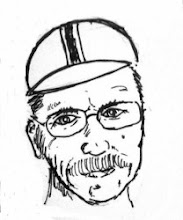The Tour Divide route traverses some rather remote parts of Canada and the United States. Before leaving, I wrote
this post detailing the various ways I intended to communicate back to the outside world. As the huge number of posts and pictures here illustrate, in general, the redundant communication strategy worked. Some of the devices and strategies worked better than others.
All the racers had
SPOT Trackers
. When I first got my SPOT back in Issaquah, I had trouble setting it up. Satellite signals have a hard time with the dense tree-cover of the Pacific Northwest. Additionally, when you first set up a SPOT, you should let it sit for about half an hour in a clear, open space so it can lock onto the satellites and figure where in the world it is. SPOT's tech support did not impress me but Matthew Lee provided me with excellent guidance and once I got my SPOT working, it worked great.
In general, the SPOTs worked wonderfully for the racers and gave fans all over the world a terrific view of the race. My own SPOT told Christine, Mark and my other fans when
I got lost near Atlantic City Wyoming. The following day, my very slow SPOT track let Christine know something was quite wrong as
I crawled across the Basin with a broken freehub.
When Matthew Lee was refueling at a McDonalds in Grant's New Mexico,
some jerk stole his bike. In a bit of high tech drama, using his SPOT tracker and
trackleaders.com, Matthew had his bike back in less than an hour!
As he's done every year, Joe Polk did a great job assembling the racer's call-ins into a daily
MTBCast. Some racers called in more than others. I tried to call in daily but it wasn't always possible. My cell phone refused to call the 888 number and often the phone booths along the route looked like this:

My cell phone, a cheap, pay as you go Samsung from Verizon, was less than brilliant on the trip. Despite what the Verizon commercials say, coverage was poor and when the phone did connect, the call quality was bad. On rare occasions I was able to post pictures from the phone, but
my camera took much better pictures. Mailing SD cards back to Mark or waiting until I was home to post the good photos proved to be a better strategy.
The phone also sucked power at a rapid rate even when I turned on the airplane mode to keep it from uselessly hunting for a signal. The ergonomics of the phone are poor and the damn thing would get jostled when it was supposed to be off. The mute button is also way too easy to hit accidentally. Christine tells me she wound up swearing at the phone when she did this, something I didn't hear because, of course, she was muted. And Christine rarely swears. I'd tell you the model number of this phone so you could avoid it, but I've just spent five minutes going through obscure menus and I can't find a damn model number. Bottom line, I definitely won't be taking this particular phone with me on future trips.
I might not be taking a phone at all because I have something that works much better for me, my
Peek Pronto
. I've
posted previously about this 109 gram gadget that only does email. While my phone over-promised and under-delivered, I had the opposite experience with the
Peek
. Officially, Peek doesn't work in Canada yet I was able to post blog reports from various Canadian locations including Banff. I posted Twitter updates using
TweetyMail, got weather and news updates via
AskPeek, and a wealth of other info via Charles Childers' brilliant service
Ent.
The Peek stayed off when I shut it off, sips power when it is on (like all my devices, I charged it via an "emergency" cell phone charger and solar charged NiMH AA cells. The
Peek
didn't connect everywhere and there were a few places (Eureka MT was one) where I the phone connected but not the Peek. Even without a signal, I could compose emails and blog posts on the Peek and when it would later connect, the Peek would send them off. But more often than not, I'd find I had no signal on the phone but the Peek would have a signal. My Peek connected in some unlikely locations including the ghost town of South Pass City, Wyoming and the near-ghost town of Jeffrey City, Wyoming. By the way, here's a Tour Divide tip: if the "city" has "City" in its name and you are in Wyoming, it is a safe bet it's not a city, it's a ghost town!
Keep 'em rolling,
Kent "Mountain Turtle" Peterson
Issaquah WA USA





































